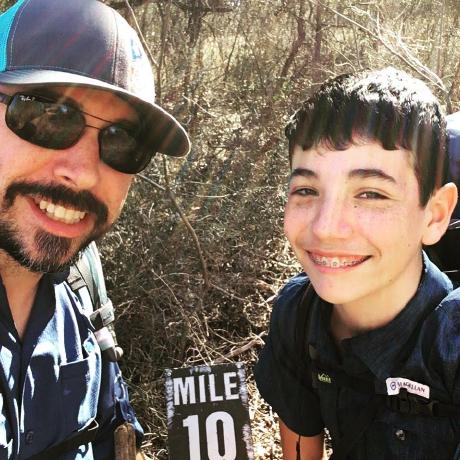Lesson 2: Writing a Serverless Action
There are many existing npm packages to display a barcode. Some don't play well in serverless environments. For this Code Lab, we'll use bwip-js to render a code128 barcode.
Barcode action
First, install the dependency with:
Copied to your clipboardnpm i bwip-js --save
Then import the dependency into your action:
Copied to your clipboardconst bwipjs = require('bwip-js');
Now we can use the library and generate a barcode buffer in the exported main function:
Copied to your clipboardconst buffer = await bwipjs.toBuffer({bcid: 'code128',text: params.value,scale: 3,height: 10,includetext: false,});
Notice that we defined a value parameter to be passed to the barcode generator configuration. This is the actual data that the barcode will be holding.
Then we can return the image representation of the buffer with:
Copied to your clipboardreturn {headers: { 'Content-Type': 'image/png' },statusCode: 200,body: buffer.toString('base64')};
Finally we can add checks to verify the requested value parameter, add logging and appropriate error handling to obtain this action:
Copied to your clipboardconst { Core } = require('@adobe/aio-sdk');const { errorResponse, stringParameters, checkMissingRequestInputs } = require('../utils');const bwipjs = require('bwip-js');// main function that will be executed by Adobe I/O Runtimeasync function main (params) {// create a Loggerconst logger = Core.Logger('main', { level: params.LOG_LEVEL || 'info' });try {// 'info' is the default level if not setlogger.info('Calling the main action');// log parameters, only if params.LOG_LEVEL === 'debug'logger.debug(stringParameters(params));// check for missing request input parameters and headersconst requiredParams = ['value'];const errorMessage = checkMissingRequestInputs(params, requiredParams);if (errorMessage) {// return and log client errorsreturn errorResponse(400, errorMessage, logger);}const buffer = await bwipjs.toBuffer({bcid: 'code128',text: params.value,scale: 3,height: 10,includetext: false,backgroundcolor: 'ffffff'});return {headers: { 'Content-Type': 'image/png' },statusCode: 200,body: buffer.toString('base64')};} catch (error) {// log any server errorslogger.error(error);// return with 500return errorResponse(500, error.message, logger);}}exports.main = main;
You can run the action locally using the CLI using:
Copied to your clipboardaio app run --local
This will:
- Start a local OpenWhisk stack on Docker
- Package and deploy the Runtime action and its dependencies using a built-in webpack configuration
- Start a local development environment and provide the action url e.g.
http://localhost:3233/api/v1/web/guest/my-barcode-app-0.0.1/barcodefor testing and debugging
Note that we'll cover how to do debug an App Builder app in a different Code Lab.
Nowadd the value parameter, e.g. ?value=test, to the url so the action will generate a barcode:

Deploying
You can deploy an App Builder Headless app with aio app run or aio app deploy. This will deploy the actions to Adobe I/O Runtime.
aio app deploy would have deployed the UI to a CDN, but since we don't have a UI, that step is ignored. We'll have a separate Code Lab to guide you through building an App Builder App with UI.
Be sure to set your Adobe I/O Runtime secrets (namespace and auth) in the .env file. Also, turn off the built-in authentication by setting require-adobe-auth: false in the manifest.yml. The security topic will be covered in a dedicated Code Lab.
Entering deploy in the CLI will output the deployed action URL:

Congratulations! Your first App Builder Headless App is live.
How can we test that the passed value is actually rendered as a barcode? Fortunately, there are barcode readers that we can use in our tests.



